BPD Books centring on a Male Character: Introduction
At BPD Beautiful, we’re passionate about amplifying authentic voices that bring understanding, compassion and hope to those living with Borderline Personality Disorder. Today, we’re honored to feature Michael Wilson, author of The Fractured Light: A Story of BPD. In this powerful BPD book, Wilson draws from his own lived experience with BPD to create Liam—a male protagonist navigating the complexities of identity, relationships and recovery. With honesty and empathy, Wilson shines a light on a perspective rarely seen in fiction: men living with BPD. In the below Q+A, he opens up about his inspiration, the challenges of writing such a nuanced story, and the message of resilience & healing that runs throughout his work.
Q:Hi Michael! Please tell us about yourself.
A: For the past five years, Michael Wilson has called Bisbee, Arizona, home. He shares his life in the quirky, historic mining town with his faithful dog, Princeton. The unique landscape and vibrant community of Bisbee often serve as a subtle inspiration for the richly detailed worlds he creates in his writing. When not crafting his next novel, he can often be found exploring the Mule Mountains with Princeton, drawing creative energy from the serene and rugged desert environment.
His work delves into the complexities of mental health, the nuances of human relationships, and the search for stability in a chaotic world. Through his writing, he aims to foster empathy and challenge the stigmas surrounding mental illness, building narratives that are as compassionate as they are compelling.
Q: What inspired you to write The Fractured Light, and why center the story around Borderline Personality Disorder?
A: I am a man with BPD and I’ve never heard a story, fictional or otherwise, about a man with BPD, especially not a success story. I drew mainly from my own experiences with therapy and DBT groups to write a story that will hopefully bring some comfort and inspiration to people with a very stigmatized illness and others looking to understand.
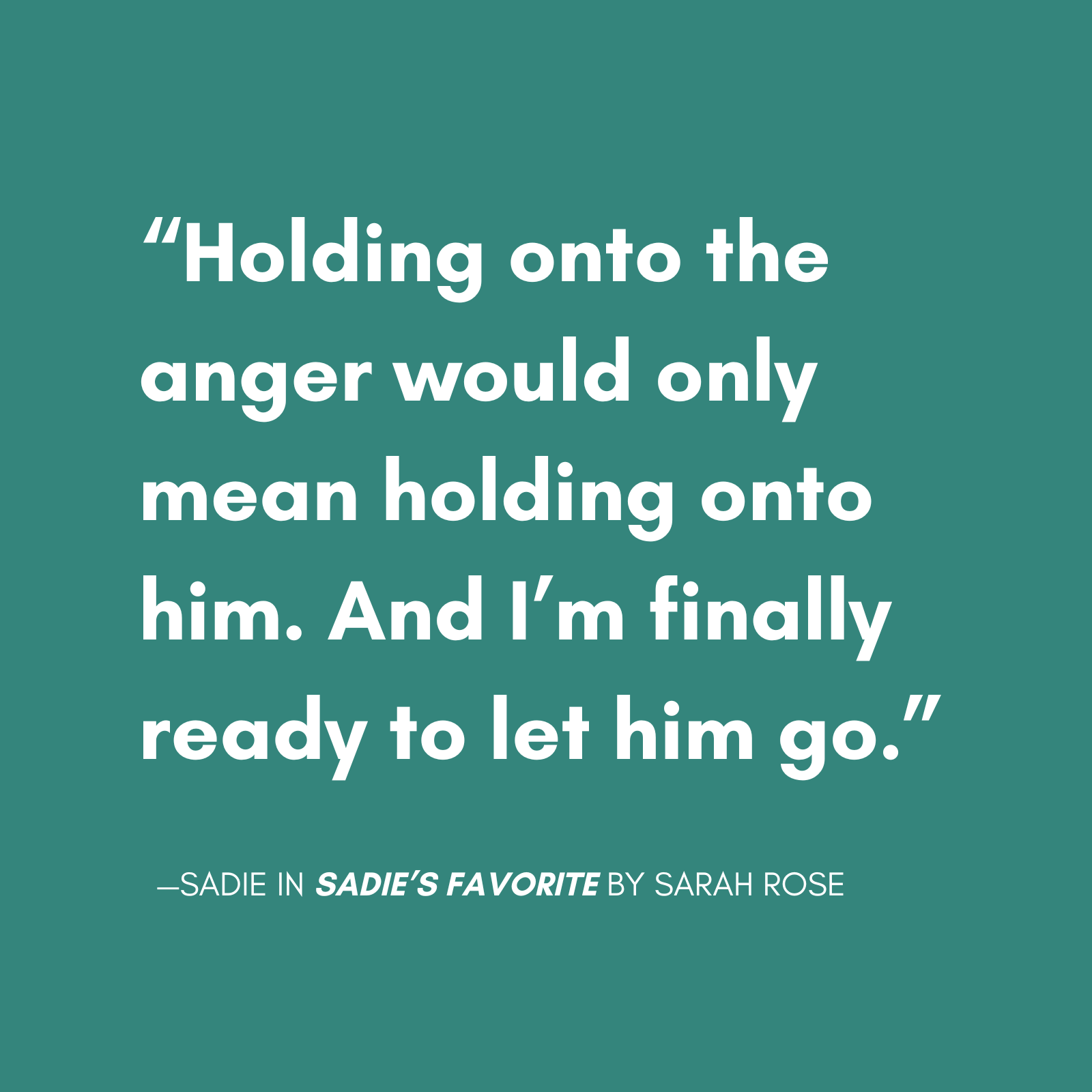
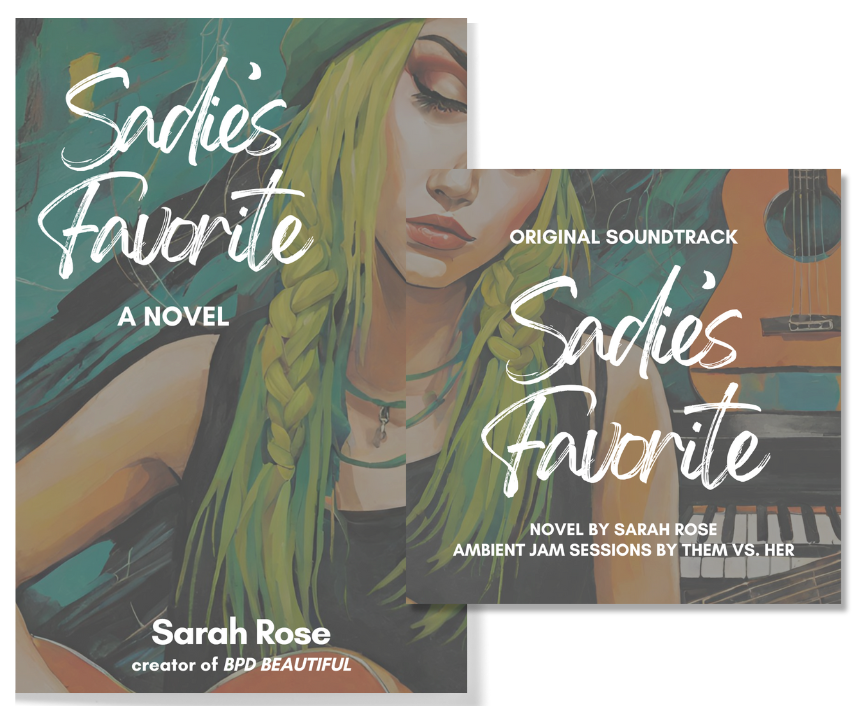
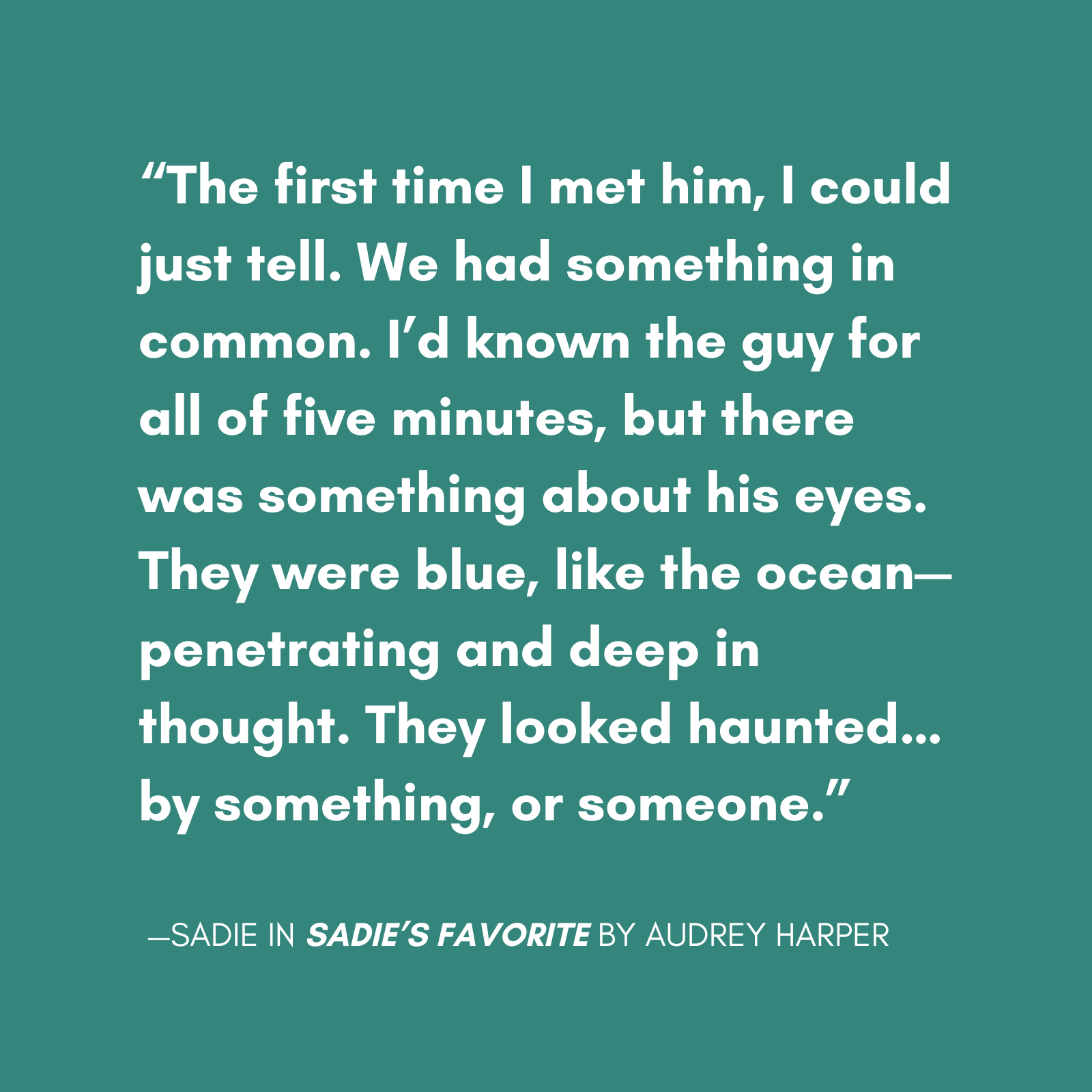
Sadie’s Favorite: A Novel + Original Soundtrack is a character-driven story about BPD recovery, trauma bonds and breaking away from abuse.
Q: Your protagonist, Liam, is a male character with BPD. Men with BPD are rarely explored in fiction. What made you want to tell the story from this perspective?
A:The very fact that men with this illness are under-represented is what made me want to write this book. There’s a lot of people out there who misunderstand what we, as people, are going through. I wanted to bring some light to that.
Q: Can you share your favorite line or an excerpt from the book?
A: A particularly resonant moment comes from Liam’s discussion with his therapist, Dr. Sharma, after a significant setback. It encapsulates the core message of the novel about the nature of recovery:
“I learned that strength isn’t about being impenetrable, but about being resilient”.
Q: Do you have personal experience with BPD—either lived or through a loved one—or did the story come entirely from research and imagination?
A: I drew from my own experiences with having BPD but the storyline and events within the storyline are completely fictional. Some of the characters, like people in the DBT group, are based on real people I encountered but I made sure to make them and their stories very different from those actual people.
Q: Liam’s world is meticulously designed, yet his internal experience is anything but. Why was architecture—and minimalism in particular—such a fitting metaphor for his character?
A: Architecture serves as a central metaphor for Liam’s internal state. His profession and his minimalist apartment represent a desperate attempt to exert control over his environment as a way to compensate for the chaos within his mind.
- A Sanctuary and a Fortress: Liam’s award-winning apartment is described as his “sanctuary and his fortress”, a space where “every surface was clean, every line was perfect”. This stark, controlled order is something he craves because it is the antithesis of his emotional life.
- External Order vs. Internal Chaos: The meticulous design of his surroundings is a direct contrast to the “chaotic, shifting landscape of his inner world”. While he can create grand, stable structures for a living, he feels unable to “manage the architecture of his own mind”.
- Recovery as Redesign: As he enters therapy, this metaphor evolves. He begins to see his recovery as an architectural problem, thinking in terms of “emotional blueprints” and learning how to redesign his life “from the foundation up”. The library renovation project becomes a direct parallel to his personal reconstruction.
Q: The book opens with a seemingly minor critique triggering a cascade of emotional dysregulation. How did you decide which BPD symptoms to highlight in your portrayal of Liam?
A: I decided to highlight the symptoms of BPD I actually have in an attempt to make the story as authentic as possible. The narrative highlights several key symptoms of Borderline Personality Disorder as they are clinically described to Liam by Dr. Sharma in Chapter 5. These include:
- Fear of Abandonment: This is a primary driver of his actions. When his girlfriend Clara mentions a short, last-minute work trip, his mind screams the word “abandonment,” leading to a primal terror that he masks with anger.
- Unstable and Intense Relationships: Liam’s relationships are characterized by swings between idealization and devaluation. He sees Clara as “true north, a fixed point of light”, but quickly turns on her with accusations and suspicion. He does the same with a junior architect, viewing him first as a “brilliant protégé” and later as an “incompetent, clumsy oaf” over minor incidents.
- Unstable Self-Image and Chronic Emptiness: Liam is haunted by a “profound and terrifying emptiness” and a core belief that he is “fundamentally, irreparably broken”. At his lowest, he doesn’t recognize his own reflection and feels his sense of self “fragmenting into nothingness”.
- Inappropriate, Intense Anger: His reaction to a minor suggestion about his building design is an example of anger that is disproportionate to the situation. A reasonable question feels like “a physical blow” and fills him with “a tidal wave of shame and anger”.
- Impulsive and Self-Destructive Behaviors: In the depths of his pain, Liam engages in self-destructive acts, such as getting into a “pointless fight” at a bar and contemplating self-harm as a way to make his internal pain external.
Q: There’s a deep theme of duality in the story—professional success versus personal chaos, intimacy versus isolation. How did you approach writing those contrasts?
A: The narrative consistently juxtaposes the capable, successful man the world sees with the terrified, chaotic man Liam is internally.
- Professional vs. Personal: In the first chapter, Liam is presented as “the brilliant architect, the charming visionary” while giving a flawless presentation. Moments later, a minor critique causes his confidence to drain away, replaced by “a sudden, icy dread”. This contrast between his competent public persona and his private turmoil is a recurring theme.
- Intimacy vs. Isolation: Liam deeply craves intimacy, feeling a “sense of peace he found nowhere else” with Clara. Yet, his intense fear of abandonment directly leads him to push her away, creating the very isolation he fears. He is described as being “desperate to hurt her, to wound her before she could deliver the fatal blow of leaving him,” which is called a “twisted, self-defeating form of self-preservation”.
Q: What was the most challenging part of writing Liam’s spiral—and what was the most healing or surprising?
A: The most challenging part of writing Liam’s spiral was trying to invoke empathy for someone with an illness that is typically characterized by such negative behaviors that it is often villainized (like in the film “Fatal Attraction”). I had to choose language very carefully to make sure it was not enabling, patronizing or excusing but, effectively, humanizing. It was not an easy book to craft, that was the surprising part. I would constantly edit and rewrite sections that I felt weren’t “real” enough while working on it and I think it shows.
Q: BPD is often associated with women in mainstream media. What do you think is misunderstood about men who live with BPD?
A: The narrative of The Fractured Light suggests that in men, the intense emotional pain of BPD can be misunderstood because it is often masked by anger or withdrawal.
- Liam’s terror of being abandoned by Clara doesn’t manifest as sadness or fear, but as suspicion and aggression: “the terror did what it always did: it put on a mask of anger”.
- His brother, David, observes that Liam’s struggles resemble their mother’s, but his intense emotions might be dismissed by others as him just being “‘difficult’ or ’emotional’”.
- Liam’s identity as a successful, controlled man makes it incredibly difficult for him to admit he needs help. Making the call to a therapist feels like a “confession of failure” and an admission that he “couldn’t manage the architecture of his own mind”.

As a BetterHelp affiliate, we receive compensation from BetterHelp if you purchase products or services through the links provided.
Q: Did you have any concerns about writing a character with BPD who becomes emotionally volatile or destructive, given how often the disorder is already stigmatized?
A: I specifically set out to write a story about a male character with BPD who isn’t the villain. My concerns when writing it were mainly about creating a character that people can empathize with. Not just BPD people, but everyday people who don’t understand what BPD people go through. Some of the language is a bit clinical for this reason, but it fosters understanding of what a doctor’s visit is like, what a DBT group is like, i.e. real things available to real people who are trying to get better in a world that often beats them down just for existing.
Q: How did you balance showing the more painful and chaotic elements of Liam’s BPD without losing empathy for him as a character?
A: The story builds empathy for Liam by providing the reader with direct access to his internal experience, showing the profound pain and fear that drive his destructive behaviors.
- Revealing the Fear Beneath the Anger: When Liam lashes out, the narrative clarifies the underlying emotion. During his argument with a board member, the text explains, “The question was not a suggestion; it was an attack. It was a declaration that his design… was flawed. That he was flawed”. This allows the reader to understand the terror driving his sharp response.
- Showing Immediate Remorse: After his outbursts, Liam is consumed by a “crushing, suffocating wave of shame”. He replays his cruel words in his mind, and the shame deepens his “pit of his self-loathing”. This immediate remorse shows that his actions are not aligned with his true character.
- Connecting to Past Trauma: The narrative links his present-day reactions to his traumatic childhood, particularly the volatile and unpredictable behavior of his mother and the emotional neglect of his father. The later revelation that his mother abused him provides a concrete source for his deep-seated feelings of being unsafe and broken.
Q: How do you think media portrayals of BPD—especially in TV and film—compare to the real experiences of those who live with it?
A: I mentioned the film “Fatal Attraction” earlier on, and I always list this as an example of how BPD is largely villainized by the media when having conversations about it. There are some big questions you have to ask yourself when viewing media like that: Can it be like that? Sure, it’s feasible that someone with BPD could have the symptoms exhibited by Glenn Close in that film. Is everyone with BPD out there boiling rabbits? No. But the message received by the general public is “people like this should be regarded as villains and are unfixable” and that’s simply not true. Recovery is possible, people can get better and symptoms can be managed.
Q: The therapist in the story doesn’t offer “easy answers.” What message were you hoping to send about the process of recovery or diagnosis?
A: The depiction of therapy and recovery in the novel is a long, arduous process, not a quick fix.
- Recovery is Hard Work: Liam is initially cynical about Dialectical Behavior Therapy (DBT), viewing his workbook as “condescending, new-age psychobabble”. The work is described as “exhausting,” requiring “constant self-monitoring” and the active use of new, unnatural skills.
- It Is a Practice, Not a Cure: Dr. Sharma reframes recovery not as an end point, but as an ongoing practice. When Liam feels he has failed after a major setback, she tells him, “This is what the work is for, Liam. Not to stop the waves from coming, but to learn how to surf”. This idea is reinforced near the end of the book, where Liam accepts that managing his BPD will be a “lifelong practice”.
- Support is Crucial: The story emphasizes that recovery cannot be done in isolation. Liam learns that healing requires a “sturdy, reliable scaffolding”, which for him includes his therapist, his DBT group, and his brother.
Q: What kind of emotional impact do you hope The Fractured Light has on readers who live with BPD?
A: My hope is that someone with BPD picking up this book is going to be inspired by Liam’s recovery journey, perhaps enough to start their own recovery journey.
Q: For readers who don’t have BPD, what do you hope they take away from Liam’s journey?
A: I am hoping my readers without BPD can gain a deeper understanding of the internal reality of someone living with the disorder. Liam’s journey illustrates:
- That behaviors that appear manipulative or aggressive can be driven by a profound, underlying terror of abandonment and a distorted perception of reality.
- The immense difficulty of living with a fractured sense of self and chronic feelings of emptiness.
- The power of non-judgmental validation. Moments of healing occur when characters like David and Dr. Sharma simply witness his pain and validate it without trying to fix it or dismiss it.
- That recovery is possible, but it is a challenging, non-linear path that requires immense courage, professional help, and a strong support system.
Q: The title The Fractured Light is both poetic and evocative. What does that phrase mean to you, especially in the context of healing?
A: The title of the book is a metaphor for Liam himself and the nature of his recovery.
- Fractured: This speaks to Liam’s core experience of his illness—feeling “fundamentally, irreparably broken”, his “fractured self”, and the trauma that “cracked his foundation”. His perception is fractured, splitting people into idealized or devalued parts, and his life is shattered by the revelation of past abuse.
- Light: This represents Liam’s innate goodness, his talent, his passion, and his capacity for love and connection. The grand opening of the library, his ultimate professional triumph, is described as a “light-filled atrium”, and his speech notes his hope that it will be a place of “light” for the community.
The title suggests that even when a person is fractured by trauma and illness, their inner light is not extinguished. Healing is not about becoming perfectly whole or “un-fractured,” but about learning to build a new life that allows that light to shine through the cracks, creating something resilient and beautiful.
Q: Many BPD Beautiful readers struggle with self-perception and fear of being “too much.” What would you say to someone who sees parts of themselves in Liam?
A: I designed Liam to be an identifiable character for someone with BPD based on symptoms that I, myself, live with. So, if you’re seeing parts of yourself in Liam as a BPD reader I would find that totally understandable. And if you’re not diagnosed and are seeing parts of yourself in Liam, I would say it may be time to start your own recovery journey. Now, I will point out that I don’t encourage you to self-diagnose based on this book, but if you are struggling with any of Liam’s symptoms prior to his involvement in therapy, professional help is available and you should utilize it.
Q: What’s next for you as a writer? Do you plan to explore other mental health themes or stories of emotional complexity?
A: I have a couple books out that deal with complex psychological themes actually. The first one is a short read called “The Injustices of Strawberries” which deals with themes of guilt manifestation and psychosis surrounding an extra-marital affair (and strawberries). The other is called “The Perfect Match: A Guide to Your Forever” which is a psychological horror that presents itself as a self-help book but actually deals with themes of narcissistic control (and some implied jabs at Scientology) which overall highlights what victims of narcissistic abuse go through and the mentality of their abuser. Both of these books are available on Amazon, and are potentially triggering if you’ve lived through either guilt manifestation, psychosis, or narcissistic abuse, so keep that in mind. As far as future projects, I’ve got some horror and mystery stories I’ve been working on, but nothing I’m ready to announce. Do keep an eye on my author page on Amazon if you’re interested though.
Q: Thank you so much for taking the time to answer these questions and for your efforts to help spread awareness through BPD books. Is there anything else you’d like to add?
A: Just that all of my books are on KDP Select for a limited time, which means you get to read them for free if you have Kindle Unlimited. Other than that, I wish everyone the best and hope for peace in everyone’s lives. Thank you.
BPD Books Centring on a Male Character: Conclusion
Michael Wilson’s The Fractured Light is more than just a story—it’s a mirror for those who live with BPD and a bridge for those seeking to understand it. By telling Liam’s story with compassion and honesty, Wilson challenges stereotypes and offers hope that recovery is possible, even in the face of deep struggle. Whether you live with BPD yourself or simply want to better understand the human side of this disorder, The Fractured Light is a story that will stay with you long after you turn the last page.
Find authentic and practical content at BPD Beautiful, where warriors, survivors, and advocates unite to support your journey with BPD.
Discover empowering resources and authentic recovery stories at BPD Beautiful, offering practical tools and a compassionate community.
BPD Resources
BPD in Fiction: Sadie’s Favorite is a Novel + Original Soundtrack, that touches on BPD, favorite person (FP) relationships, healing after abuse, parenting and more. Written by Sarah Rose, creator of BPD Beautiful. Soundtrack performed by Them vs. Her.
Get 20% off your first month of BetterHelp. Get matched with a licensed therapist within 48 hours. Subscriptions as low as $65/week, billed every 4 weeks. Cancel anytime.
Manage your BPD symptoms with a printable workbook.
See our recommended list of books about BPD.
Start a Discussion
Have you tried incorporating these tips to help you in managing the intense emotions that come from having BPD &/or anxiety? Tell us about it in the comments.
Pin this Post
Liked this post? Please help support BPD Beautiful and spread borderline personality disorder awareness by pinning it to Pinterest.
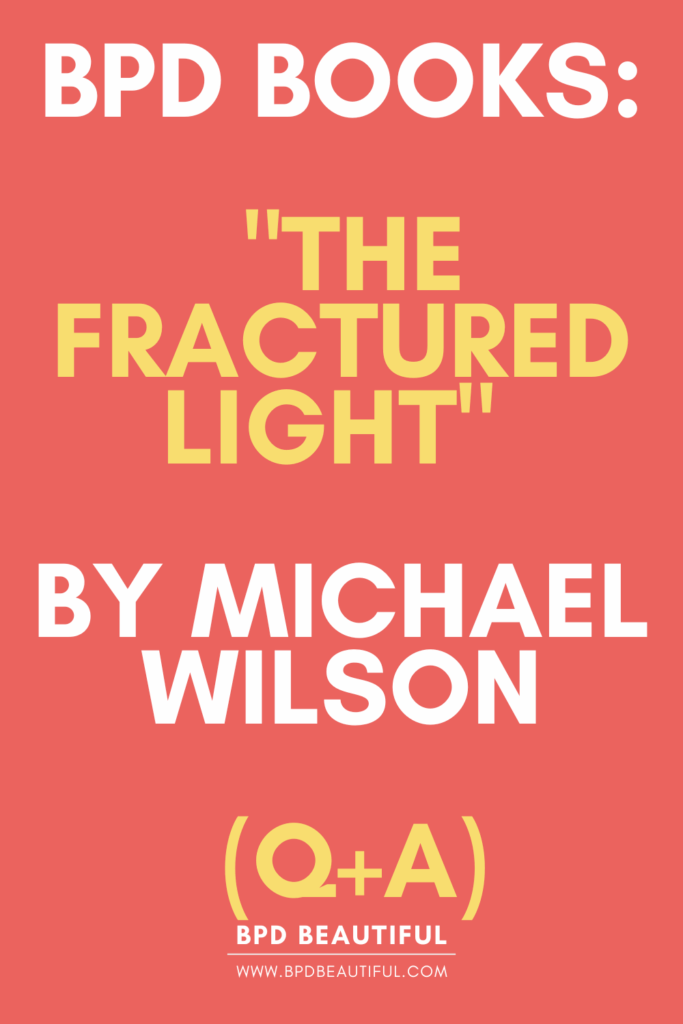
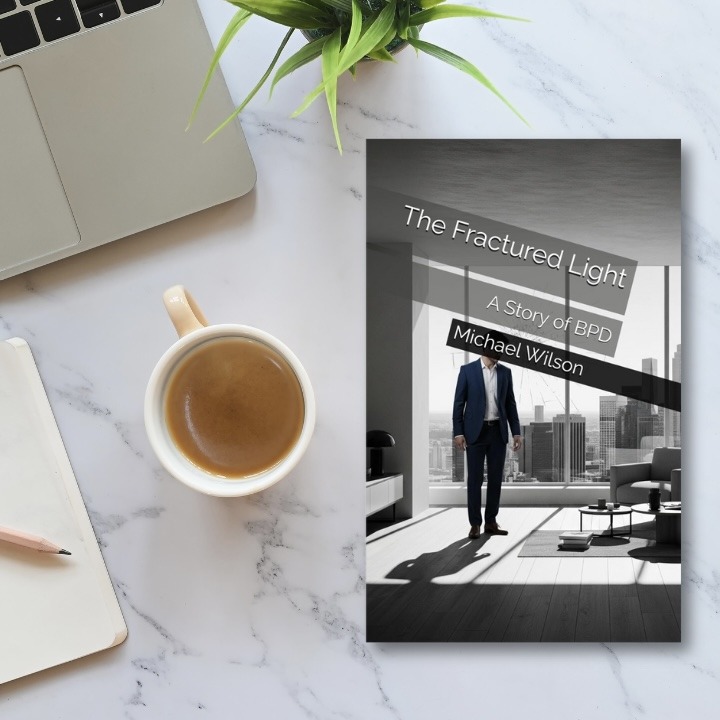

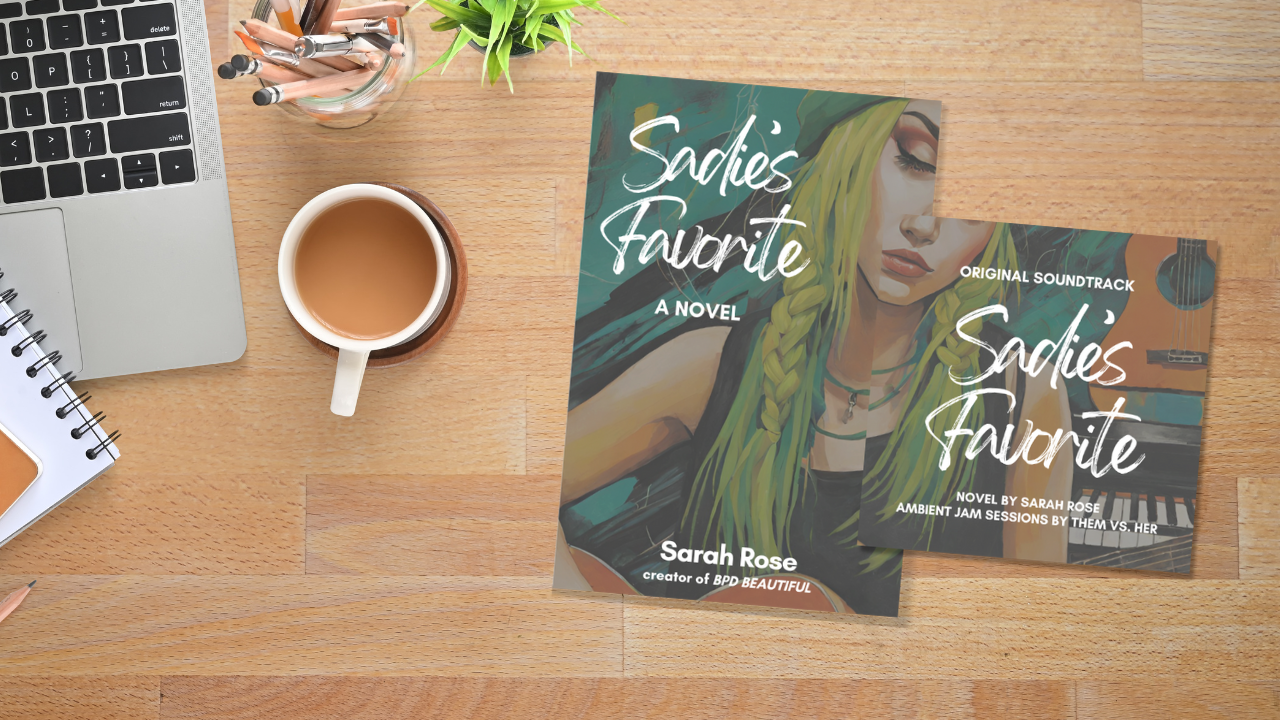

Leave a Reply
You must be logged in to post a comment.